Articles
The Superfoods That Boost Your Health
When you picture a superfood, you might think of colorful items full of special properties that can help bring balance, promote healing, or aid in a health journey. Referring to a superfood typically means that it contains multiple health benefits or offers a large dose of nutrients, sometimes in a very small package, such as goji berries or chia seeds.
Where did the term "superfoods" originate?
One theory is that the term emerged from food marketing when The United Fruit Company referred to bananas as a superfood to help promote sales of the imported fruit. "The Food Value of the Banana" was first published in 1917 by the company, containing articles penned by scientists, professors, doctors, and other experts praising the nutritional benefits of bananas.1
Since then, a lot of variation has emerged when it comes to what constitutes a superfood. The superfood industry is massive with a projected market value of $38.5 billion by 2033.2 Today, countless products carry a superfood label including fruits, vegetables, spices, nuts, seeds, greens, and adaptogenic powders. Other foods that are often referred to as superfoods include ancient grains, sea vegetables, and kombucha.
It's important to note that the word "superfood" is not based in science or a regulated term like organic.3 Still, these foods do have benefits and are a wonderful addition to a healthy diet, helping enhance your juices and smoothies with extra vitamins and antioxidants.
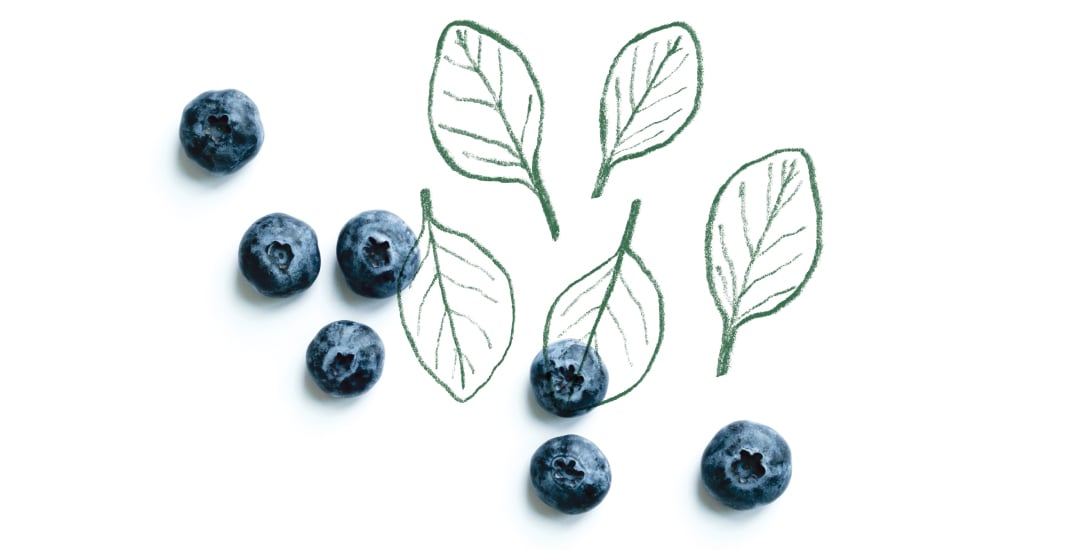
Classifying superfoods
The Centers for Disease Control and Prevention (CDC) created a list of superfoods calling them powerhouse fruits and vegetables. After studying almost 50 foods to determine which were the healthiest, watercress, an aquatic flowering plant in the cabbage family, topped the list.4 The top 15 foods featured all greens including chard, beet greens, spinach, parsley, and kale. This research affirms why green juice can be such a powerful addition to your diet.
The CDC list only included fruits and vegetables and did not account for nuts, seeds, and other categories of health foods such as fermented foods or snacks made from superfoods. The nutrient density of these foods was calculated with 17 nutrients of public health importance per the Food and Agriculture Organization of the United Nations and Institute of Medicine, such as potassium, fiber, protein, calcium, iron, thiamin, riboflavin, niacin, folate, zinc, and vitamins A, B6, B12, C, D, E, and K.
Another measure for superfoods is the Oxygen Radical Absorbance Capacity (ORAC) developed by the USDA's National Food and Nutrient Analysis Program. This scale calculates "total antioxidant activity in a specific food product that results from the presence of a number of chemical compounds in foods that act as antioxidants."5
Oxidative stress is an imbalance of free radicals and antioxidants in the body that can damage cells and lead to illness and chronic disease. Antioxidants found in certain foods play a role in reducing oxidative stress and reducing risk of developing disease.
It assigns a value to a long list of fruits, vegetables, and spices. The higher the score, the larger the food's antioxidant capacity. The list includes everything from turmeric and Ceylon cinnamon to açaí berries and blueberry juice.6
The official ORAC database has been removed from the USDA website because "ORAC values are routinely misused by food and dietary supplement manufacturing companies to promote their products and by consumers to guide their food and dietary supplement choices," according to a 2013 article in the Journal of the Academy of Nutrition and Dietetics.7 A 2021 analysis on antioxidant activity in foods confirmed that conventional methods for measurement are still needed.8
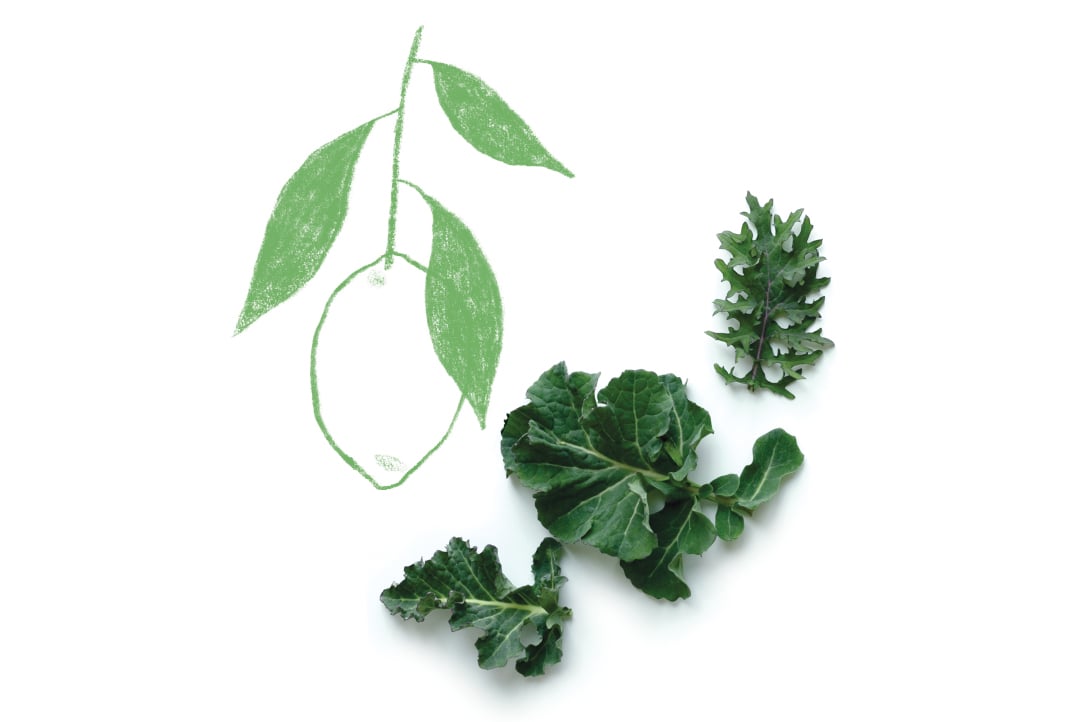
Back to the basics
Many affordable fruits and vegetables don't sport a "superfood label" but are still a great source of nutrition.
• Apples, for example, have multiple health benefits. They are an easy-to-find snack that's high in fiber, in particular pectin, which is a type of fiber that acts as a prebiotic helping to promote better gut health.9 Apple peels also contain quercetin, a plant pigment full of antioxidant and anti-inflammatory properties.
• Carrots are another vitamin powerhouse packed with dietary carotenoids like beta-carotene, along with fiber, vitamin K1, potassium, and other antioxidants.10, Plus, they help sweeten a juice or are great to crunch on as a snack with hummus or your favorite dip.
• All greens have a ton of nutrition, but we can't talk about superfoods without mentioning all the benefits of kale. This dark leafy green is an amazing source of vitamins A, C, K, and powerful antioxidants lutein and zeaxanthin.11 Kale can have a bitter flavor that is easy to tame when you break it down either by massaging it for a salad, tossing it in a juicer or blender, or sautéing it with some olive oil and lemon.
In Ayurveda, a holistic healing system that originated in India more than 5,000 years ago, superfoods are not relegated to a few plants but apply to the foods, herbs, and spices that best serve the individual and their health needs.
"When we work with herbs and supplements in Ayurveda, it's technically already considered secondary," said Ayurvedic practitioner Angelica Neri. "That's because Ayurveda really emphasizes diet and lifestyle practices first."
Whole, natural foods along with healthy lifestyle practices are the foundations that can support you. Supplements and superfoods are a great bonus.
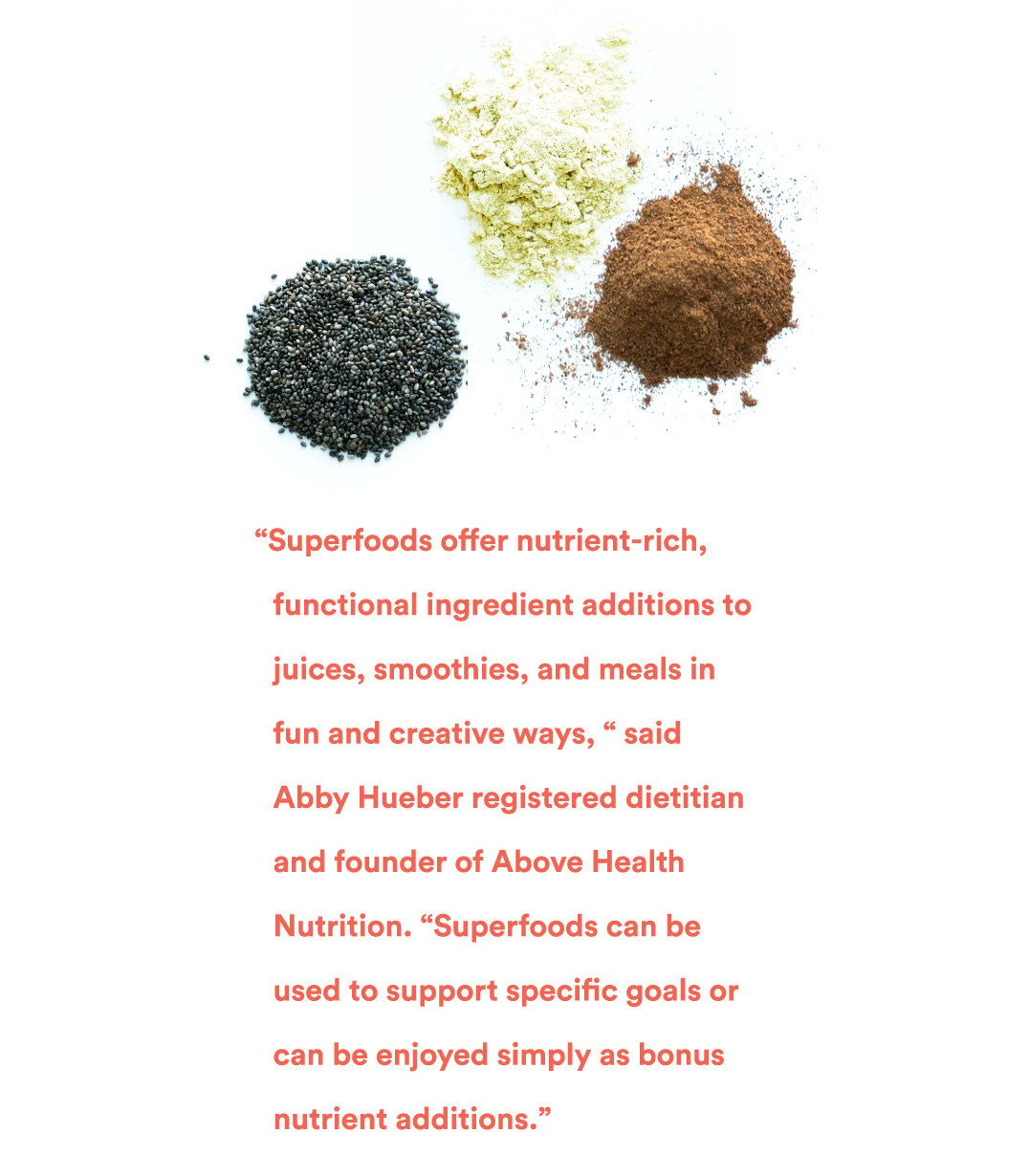
Sourcing superfoods
Have you ever tried a new superfood and wondered if it was really doing more to help improve your health? It's essential to learn more about where these foods come from, how they are processed, and how often to include them.
Just like any other food, it's important to read labels. Many types of powders, packaged goods, or frozen mixes come with added sugars and other unwanted ingredients. Choose products from companies that care about quality and sourcing. Watch out for "health-washing" where companies add buzzwords to the front of a package touting healthful ingredients while the list in the back tells a different story.
"The best thing always is to just do your homework on knowing the brands," Neri told us. "A lot of times when you get these herbs they are not potent enough and you're not going to really feel the difference."
She chooses products that are organic and fresh. She mentioned that many herbs can become dull after about six months or so. She also says it's important to look for businesses that source from places that are local to them and adhere to a standard of ethical practices.
Companies like Anima Mundi, created by Costa Rican Herbalist Adriana Ayales, discuss their manufacturing standards on their website stating, "Our superfoods are made in an FDA registered and CGMP certified facility, made in the U.S. with certified organic herbs and wild harvested plants in a vegan and gluten-free kitchen. Our products contain zero fillers, binders, or flow agents. They are lab tested for purity and efficiency."
When it comes to how often to include superfoods in your diet, it can be largely up to the individual or the health practitioner you're working with.
"A general rule of thumb is seven weeks on and one week off," Neri said. "Or you could try six days a week and then take one day off."
She told us she likes working with the herb for about three months.
"I'm such a firm believer in trial and error because that really helps you to strengthen the trust in your own body and knowing what your own body is saying to you," she said.
Hueber agreed that it's fun to try new superfoods, and she recommends introducing one at a time, especially if it's a concentrated powder so you can understand how it makes you feel.
"Give it a try for a couple days in a row or longer to get the impact of it in your system," she told us. "The effects may be mild or you may have more noticeable shifts such as energy, calm, sleep support, or more."
Interested in adding superfoods to your juices and smoothies? Here's a few you can try in your juices.
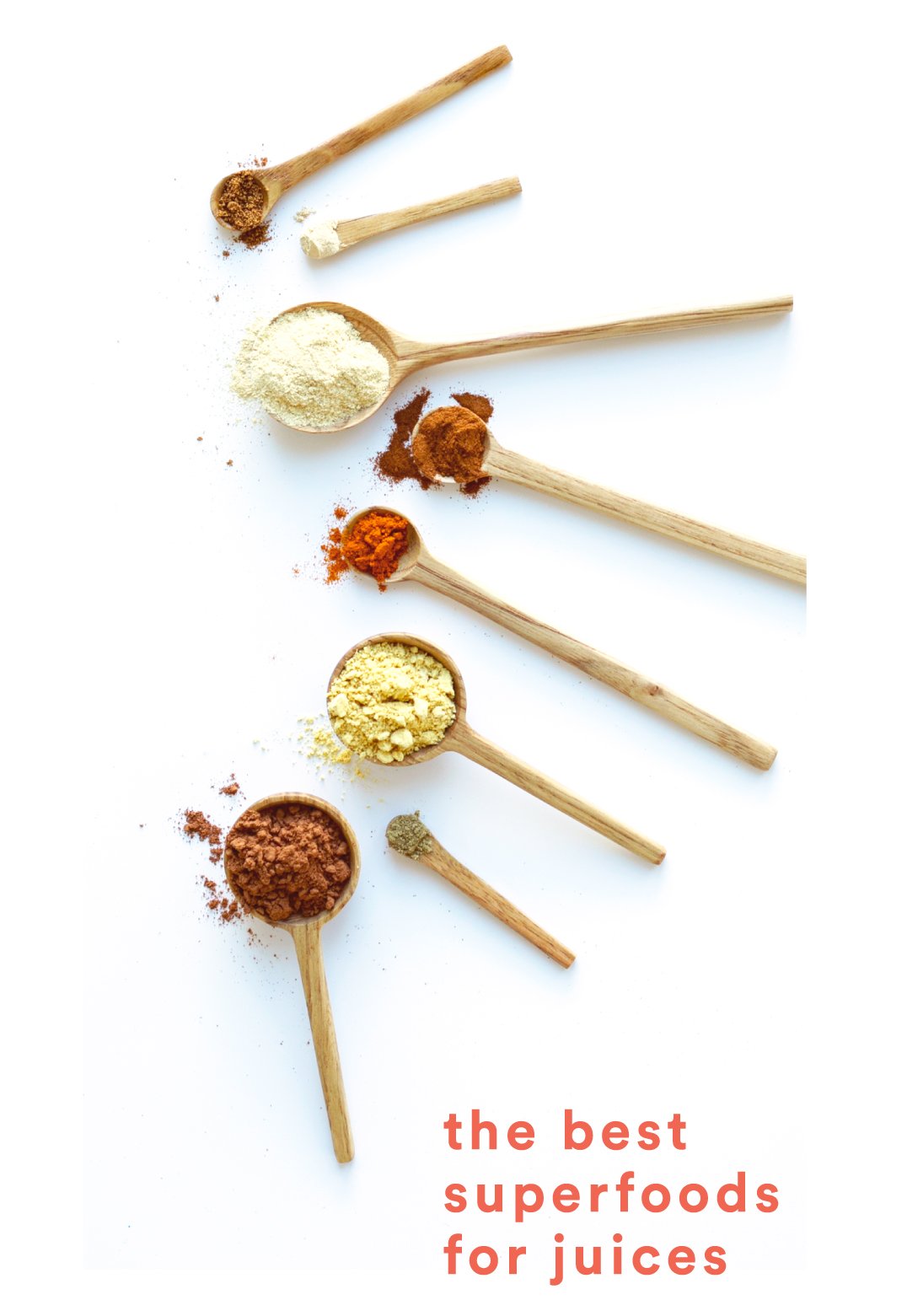

Fresh ginger root adds a bit of warming spice to any juice but it also contains gingerol, a natural compound that aids in gastrointestinal motility, helping encourage better digestion.12 It works to reduce bloating, nausea and supports blood circulation, reduces pain from arthritis and inflammation, and offers immune support particularly against upper respiratory infections. While it's great to add a nob or two to a juice, depending on how much "kick" you enjoy, you can also add fresh ginger to a smoothie.
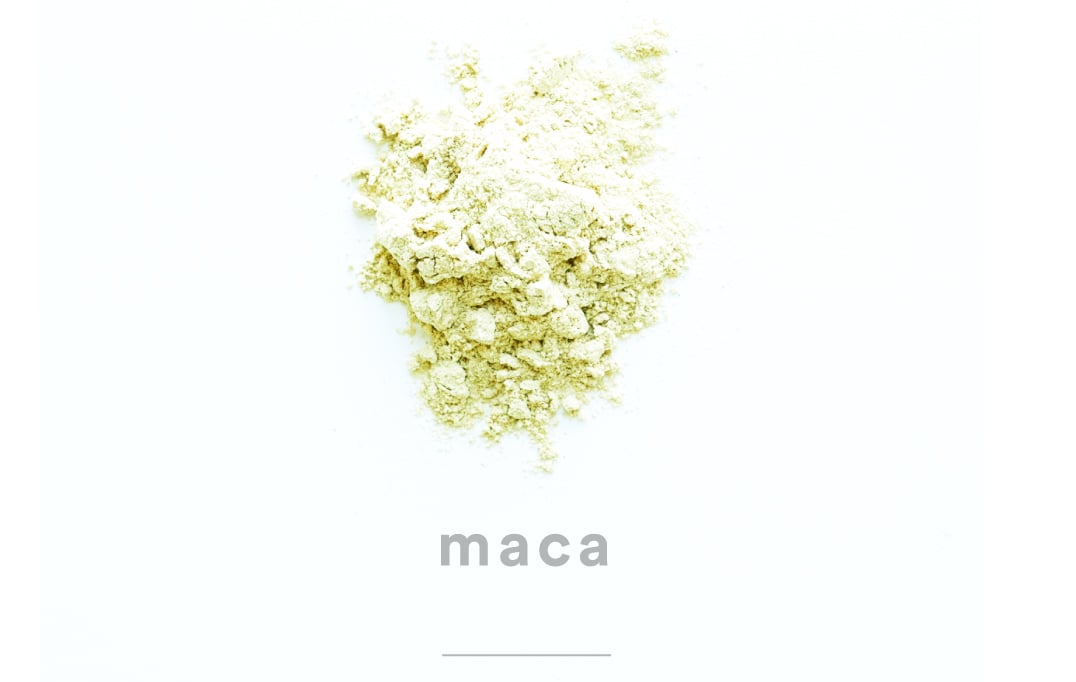
Maca, also known as Peruvian Ginseng and grown at a high altitude in the Central Andes, is a cruciferous, root plant, a cousin to broccoli. A 2016 study published in Pharmaceuticals confirms the plant's ability to boost mood and energy.13 Another study found that it can positively impact women's hormones, significantly reduce follicle-stimulating hormone levels, which helps alleviate many menopausal symptoms.14 Maca is also known to be possibly beneficial in sperm health in men and improving sexual desire in both men and women. Usually sold as a powder, it's easy to add to juices and smoothies. Just note that it can have a nutty or bitter taste, so think of pairing it with other root vegetables like in a carrot, apple, and beet juice.

Curcumin is the active ingredient in this flavorful, yellow spice and is also highly studied for its health benefits, including its anti-inflammatory properties. A 2016 systematic review of randomized controlled trials found that 1,000 mg a day of curcumin reduced pain and inflammation as well as nonsteroidal anti-inflammatory drugs (NSAIDs), according to the Arthritis Foundation. You can find fresh turmeric as a root, just like ginger at many specialty stores or you can add its powder form to juices and smoothies too.
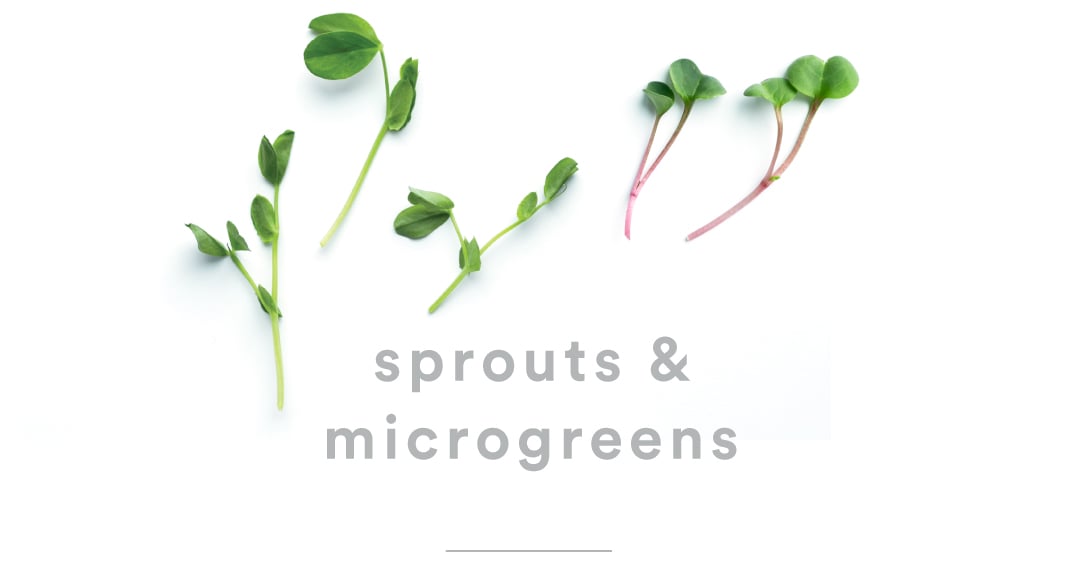
These tiny greens are packed with nutrients. Sprouts are germinated seeds sometimes called baby plants that don't require soil—only water. Microgreens are slightly more mature plants that are grown in soil or a soil substitute. Broccoli sprouts have been studied and found to have anti-cancer properties.15 A team of scientists with the Agricultural Research Service analyzed the key nutrients in different varieties of vegetable microgreens and found that microgreens contained considerably higher levels of vitamins and carotenoids—about five times greater—than their mature plant counterparts.16, Both sprouts and microgreens are great to add to salads, wraps, juices, and smoothies.

Wheatgrass comes from the young green shoots of a wheat plant. Known for its high chlorophyll content and antioxidant and anti-inflammatory properties, look for wheatgrass juice or powder in health food stores and online. You can also find fresh-cut wheatgrass at some grocery stores, or at the farmers' market. The earthy taste can benefit from pairing with sweeter fruits like pineapple or apple or you can enjoy it on its own as a fresh juice shot.
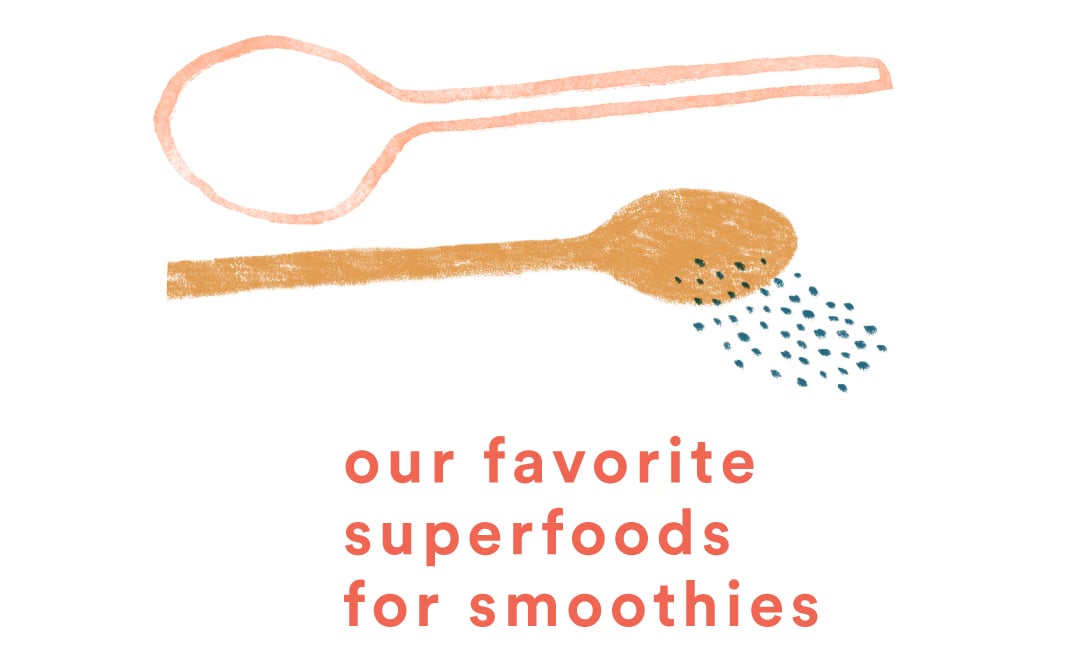

Açaí (pronounced: ah-sigh-EE) berries are small, grape-like berries with a dark purple hue that grow on palm trees in South America. They are a good source of anthocyanins, which research shows can help enhance cognitive function, prevent cancer, and reduce the risk of cardiovascular disease. You can find açaí berries dried, frozen, or in powder form. You can add any of these forms to a smoothie or bowl to boost nutrition. Always read labels and watch out for frozen açaí with added sugars. Look for products that feature just the berries.

One of the tools you can use to help your mind and body relax is to add adaptogens into your routine. They are a class of plants and herbs that can help your body "adapt" to challenges and stress. These powerful herbs help boost your stamina, restore balance to the body, and support metabolic function. You can find many blends on the market, usually with some blend of medicinal mushrooms (such as reishi or chaga), ashwagandha, or licorice root. Simply add these blends to a smoothie or tea to enjoy the benefits.
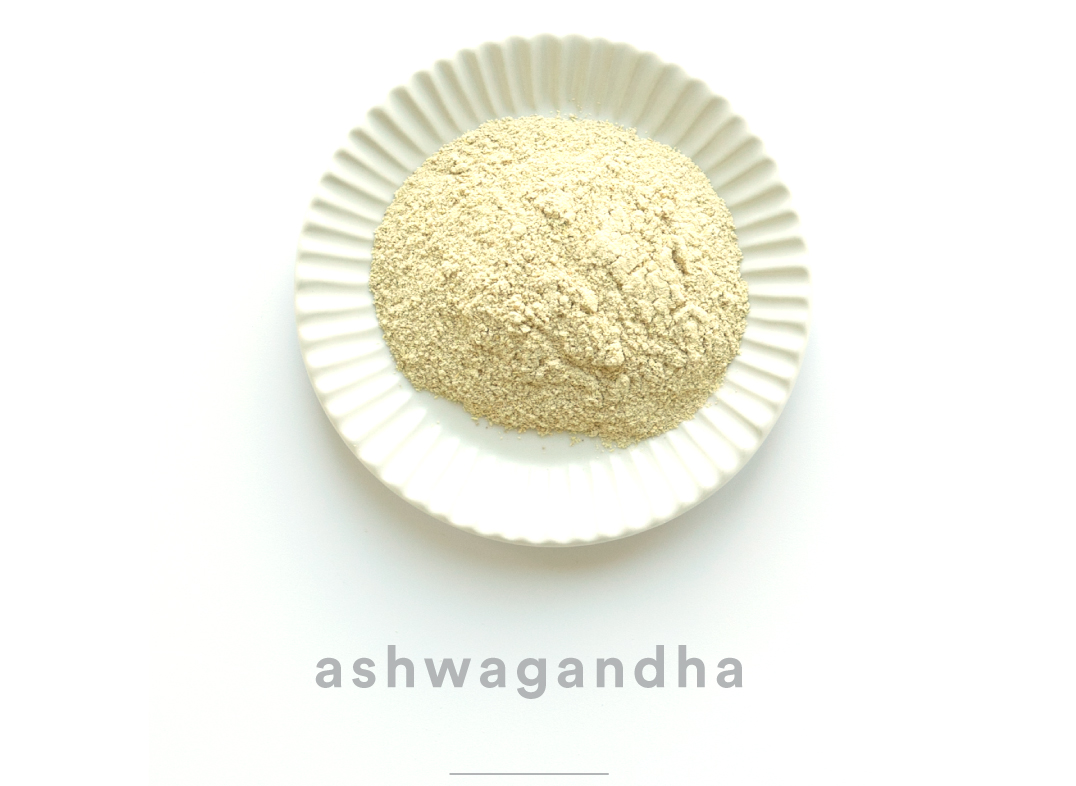
This adaptogen deserves its own mention. Studies show that ashwagandha possesses anti-inflammatory, anti-tumor, anti-stress, antioxidant, immunomodulatory, and rejuvenating properties, and that it has a positive influence on the endocrine, cardiopulmonary, and central nervous systems. It is known in ayurvedic medicine as a powerful immune booster. It most often can be found in powder form, which can easily be added to juices, smoothies, teas, hot chocolate, or matcha latte.
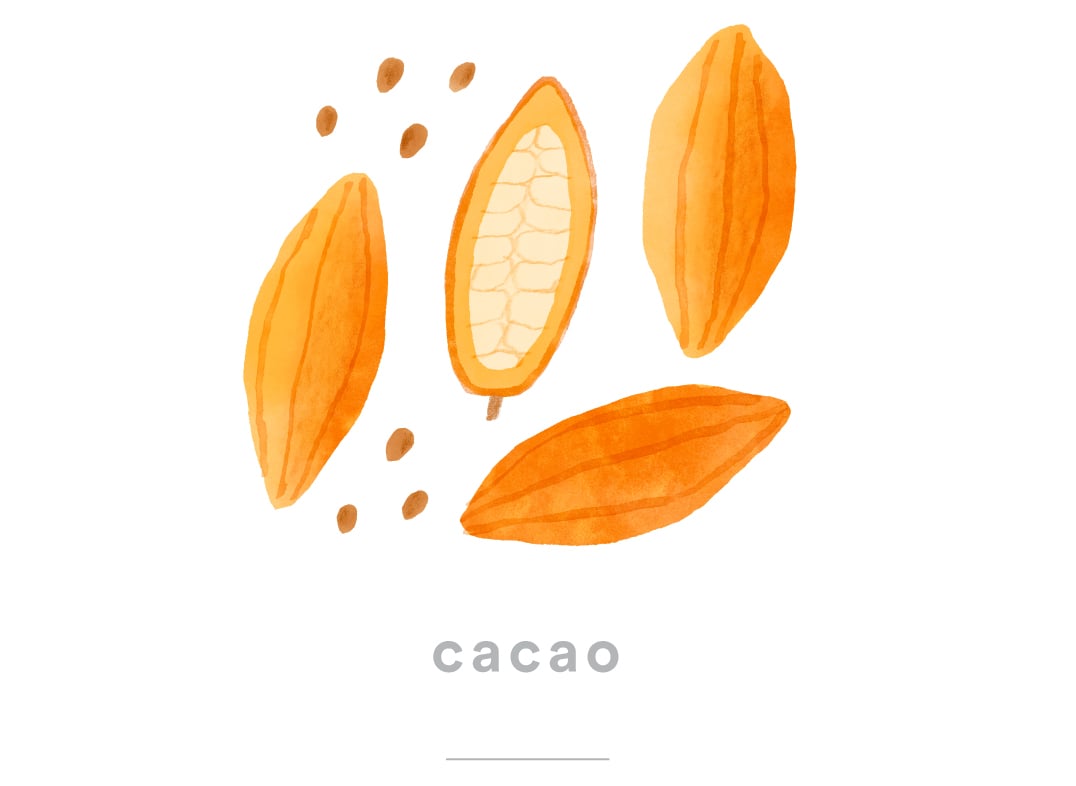
Chocolate comes from a fruit that grows on a small evergreen tree called Theobroma cacao and is native to tropical regions in Central and South America and West Africa. Cacoa is the raw, less-processed version of cocoa. The powder comes from the beans of the cacao fruit. Cacao powder has a slight bitter taste and is full of nutrients like iron, magnesium, zinc, flavonols, and copper. Add it to smoothies, hot chocolate, or baked goods with naturally sweet fruit like bananas or dates. Look for cacao brands that are committed to protecting forests such as those with Rainforest Alliance and that use fair-trade practices with cacao farmers. Note: Cacao beans contain caffeine so don't consume later in the day if you are sensitive.
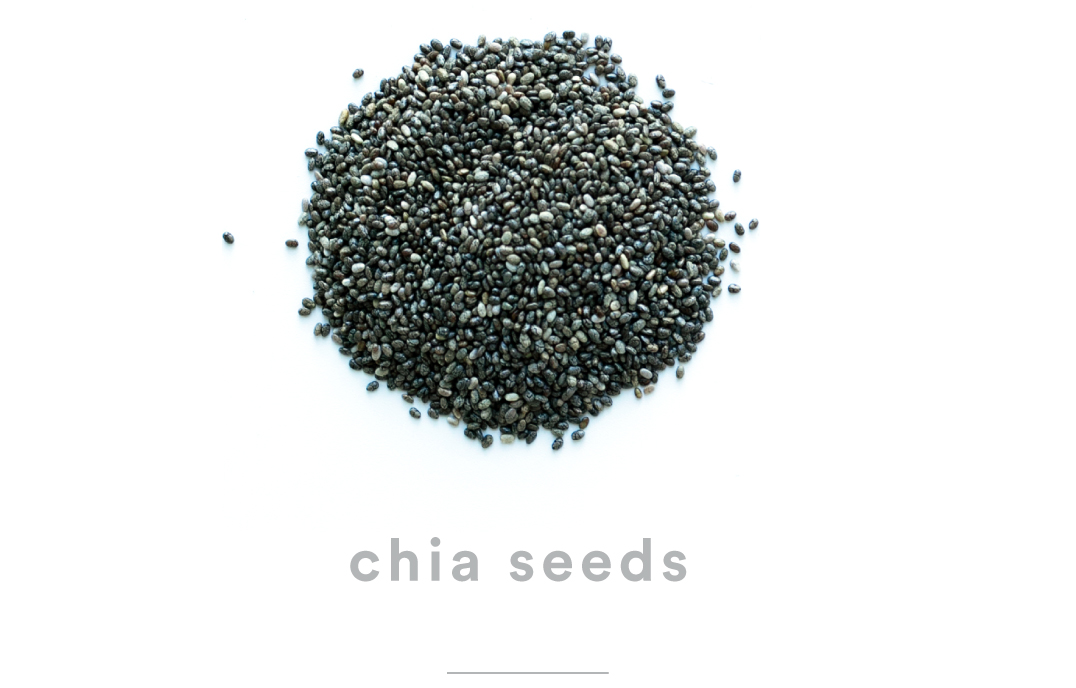
Chia are tiny white or black seeds that come from the chia plant Salvia hispanica, native to Mexico and Guatemala. Despite their size, they are mighty when it comes to nutrition. They are full of protein, fiber, and minerals like calcium and magnesium. Chia seeds are also a plant-based source of heart-healthy omega-3 fatty acids. They can be soaked and used to make porridge, smoothies, bowls, or baked goods.

Native to Asia, goji berries are bright red fruits that have been used for thousands of years as a medicinal herb and supplement. They contain high amounts of healthy antioxidants, especially zeaxanthin. One study reported that seniors who drank goji berry juice for 90 days increased zeaxanthin and other antioxidant levels significantly. You can easily blend these berries into smoothies, use them to top smoothie bowls, or add them to your juicer. Try blending them with orange for a dose of vitamin C and a delicious flavor.

These small seeds, also called hemp hearts, come from the Cannabis sativa plant, but don't cause any mind-altering effects. In fact, they are full of fiber and essential fatty acids. They are also a great source of plant protein containing almost as much protein as soybeans. About 3 tablespoons of seeds contain more than 9 grams of protein. Hemp seeds are easy to sprinkle on top of smoothies and bowls or to blend with other healthy ingredients.
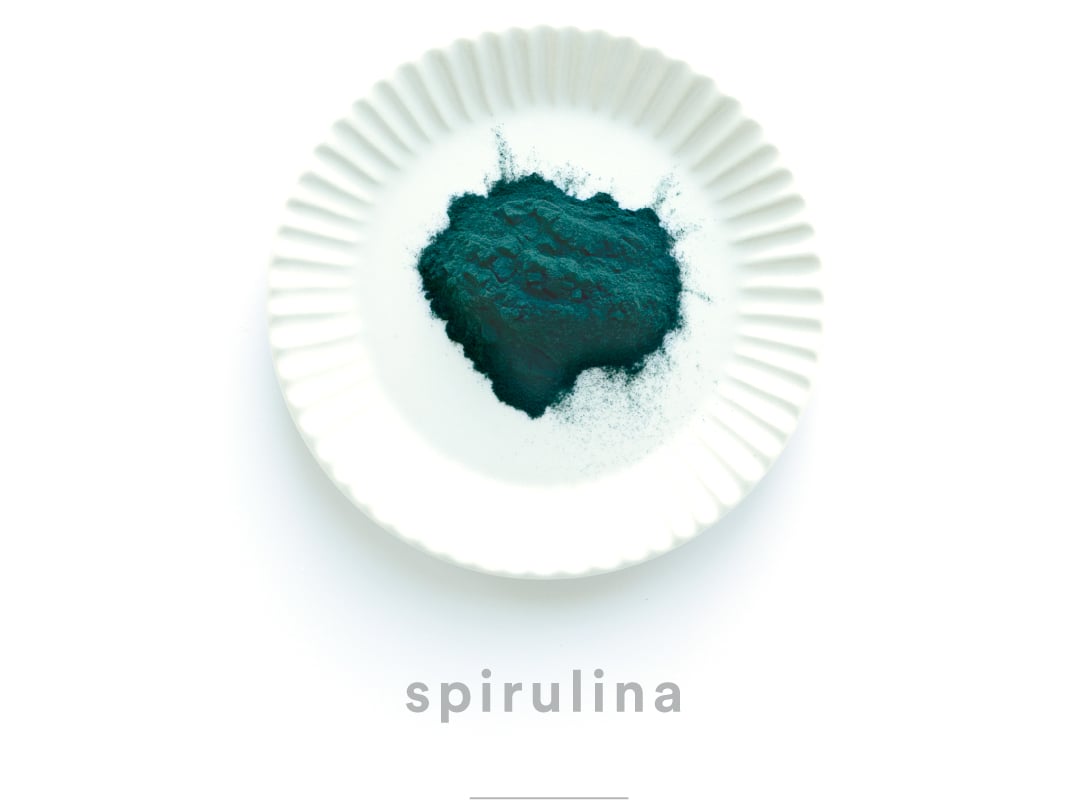
This blue-green algae grows naturally in both oceans and salty lakes in subtropical climates. Usually found in green powder form, it gets its name from the way it grows—in microscopic spirals. It contains a wealth of nutrients including calcium, iron, potassium, sodium, and essential amino acids, along with being another great source of plant-based protein. Spirulina definitely has an earthy, pond flavor, so pair it with something sweet such as apple, pineapple, or mango. You can add it to both juices and smoothies. A favorite way to consume it is by juicing 2-3 sweet apples with 1 lemon and 1 teaspoon of spirulina. Add your juice and spirulina to a jar and shake vigorously to mix it all together.
What is your favorite superfood, and why?
Enjoying superfoods means we are consuming nutrient-dense foods that increase the variety and amount of nutrients we get from adding them to juices, smoothies, and more.
What are your favorite seasonal spring ingredients to add to your juices and smoothies?
I love eating with the seasons. My favorite spring produce to use in juices and/or smoothies are most definitely beets and fresh herbs like mint! Mint is rich in nutrients, and may help to relieve indigestion and tastes amazing in juices and smoothies. Beets are simply gorgeous and have so many benefits for your body like helping to lower inflammation, help protect your heart, and are also said to be amazing for a healthy pregnancy. But I'm not your mama, I'm your friend... so always do your research!
sources:
- https://www.amazon.com/Food-Value-Banana-Scientific-Authorities/dp/1985146177
- https://www.statista.com/topics/3250/superfoods/#topicOverview
- https://www.ams.usda.gov/services/organic-certification/organic-basics
- hhttps://www.cdc.gov/pcd/issues/2014/13_0390.htm
- https://www.ars.usda.gov/research/publications/publication/?seqNo115=251105
- https://modernsurvivalblog.com/health/high-orac-value-antioxidant-foods-top-100
- https://www.jandonline.org/article/S2212-2672(13)00242-6/fulltext
- https://www.ncbi.nlm.nih.gov/pmc/articles/PMC8037236
- https://health.clevelandclinic.org/benefits-of-apples
- https://www.ncbi.nlm.nih.gov/pmc/articles/PMC3550877
- https://www.hsph.harvard.edu/nutritionsource/food-features/kale
- https://www.hopkinsmedicine.org/health/wellness-and-prevention/ginger-benefits
- https://pubmed.ncbi.nlm.nih.gov/27548190/
- https://www.healthcentral.com/article/melatonin-maca-menopause-symptom-relief
- https://www.ncbi.nlm.nih.gov/pmc/articles/PMC8116591
- https://agresearchmag.ars.usda.gov/2014/jan/greens
- Choosing a selection results in a full page refresh.
- Press the space key then arrow keys to make a selection.




